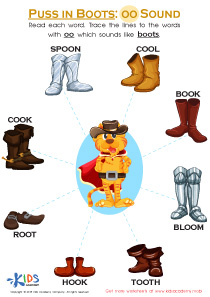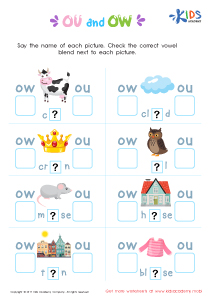Vocabulary expansion Vowel Blends Worksheets for Ages 3-8
7 filtered results
-
From - To
Boost your child's language skills with our Vocabulary Expansion Vowel Blends Worksheets for Ages 3-8. Our engaging worksheets promote phonemic awareness and help young learners master vowel blends, crucial for developing fluent reading and spelling abilities. Designed by educators, these printables offer a fun and interactive approach to vocabulary growth through colorful exercises and captivating illustrations. Perfect for classroom use or homeschooling, these resources cater to various learning styles, ensuring every child progresses confidently. Equip your 3-8 year-olds with the tools they need to succeed in their literacy journey with Kids Academy's expertly crafted vowel blends worksheets.
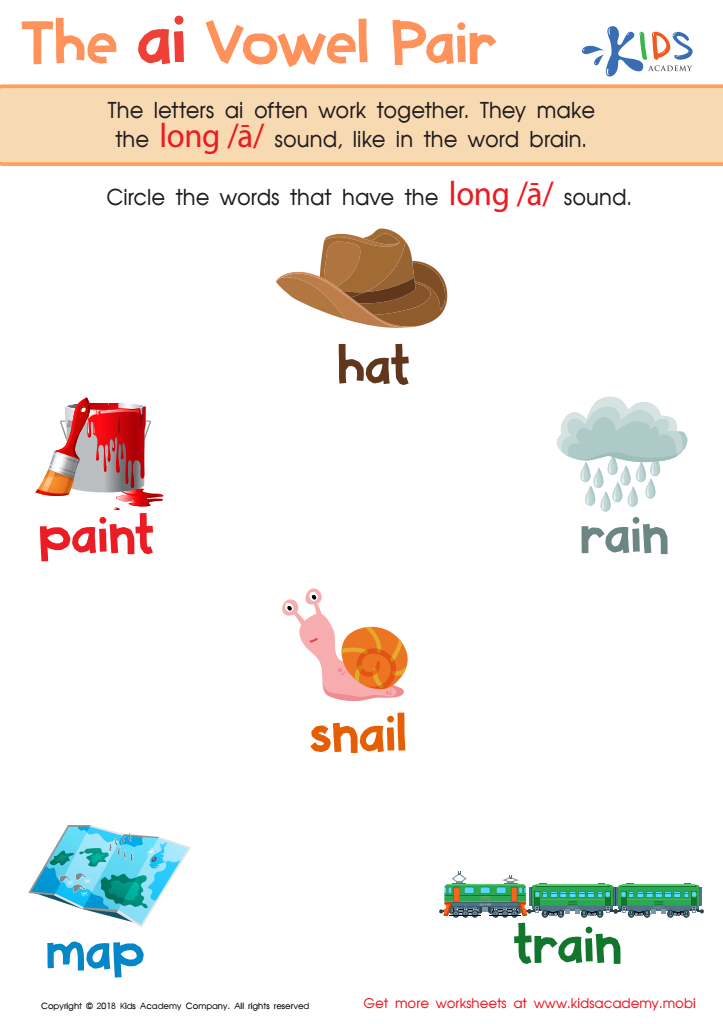

The AI Vowel Pair Worksheet
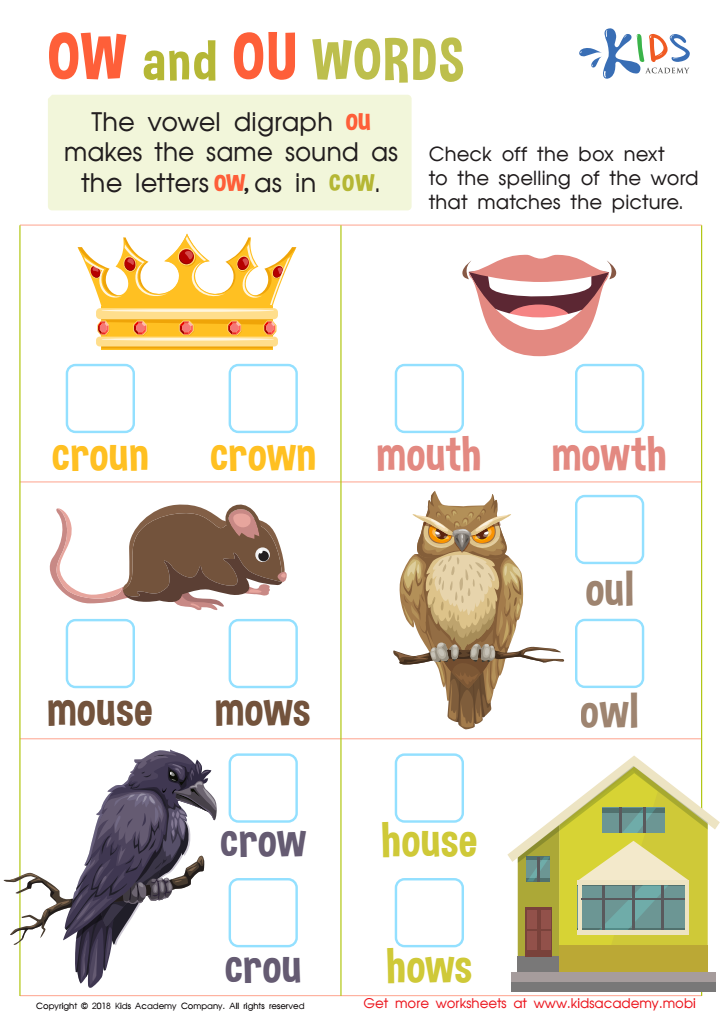

Reading: OW and OU Words Worksheet
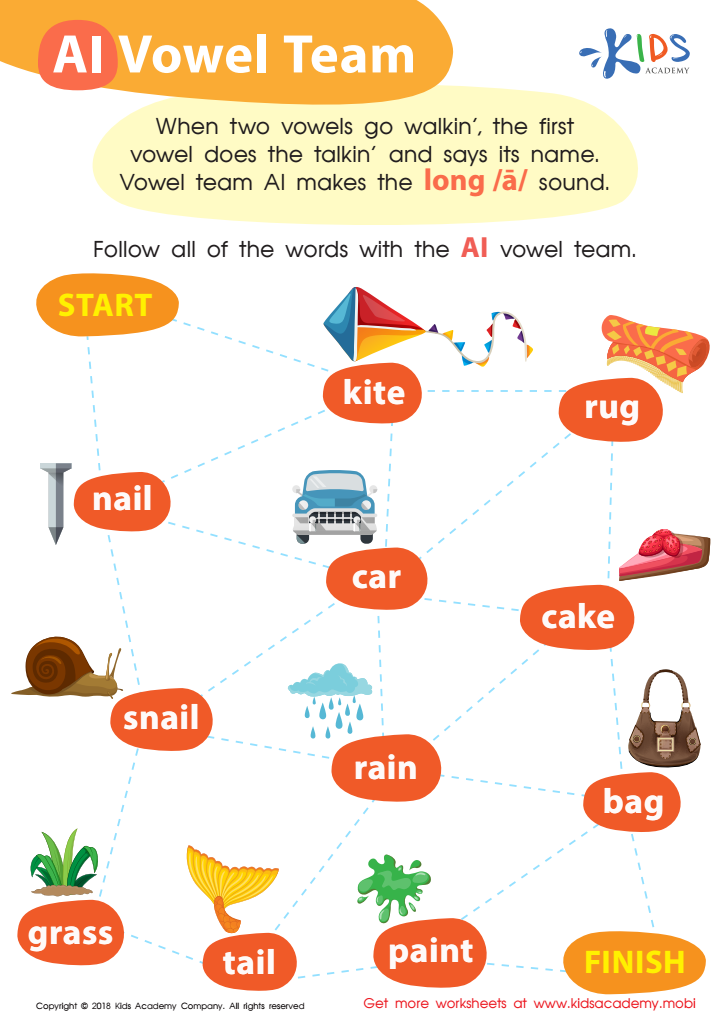

Reading: AI Vowel Team Worksheet
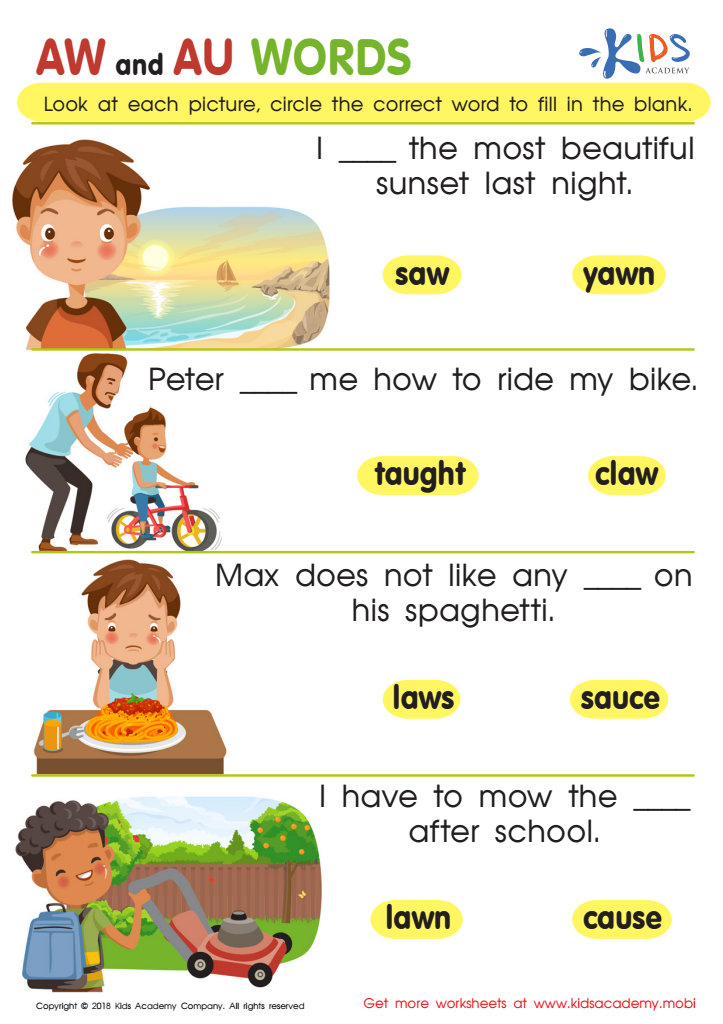

Reading: AW and AU Words Worksheet
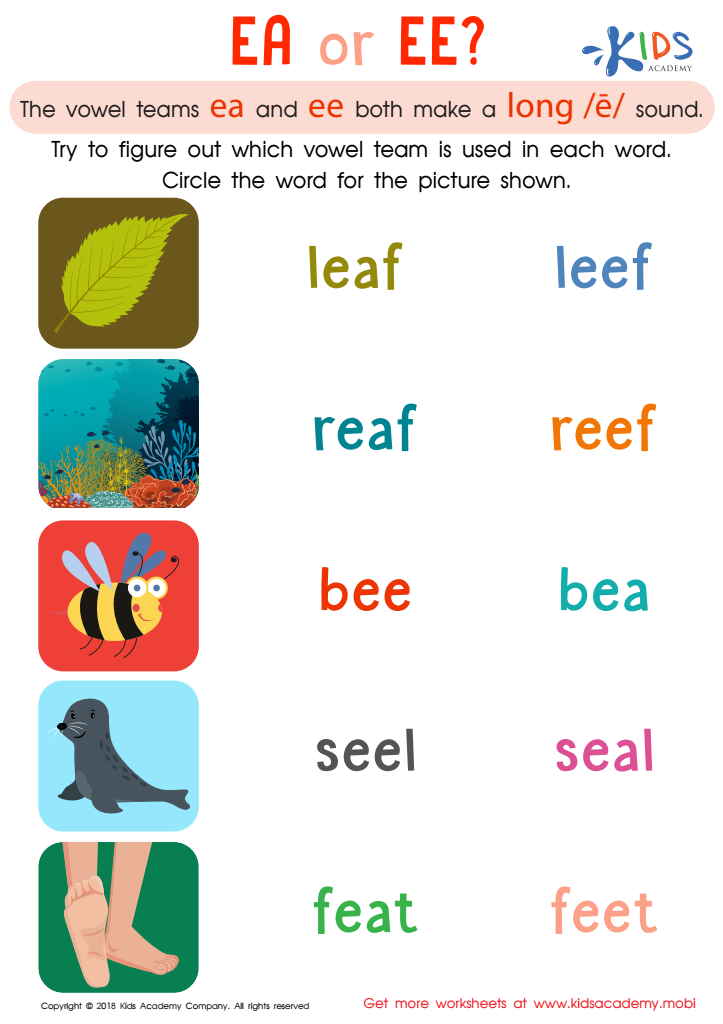

Reading: EA and EE Worksheet
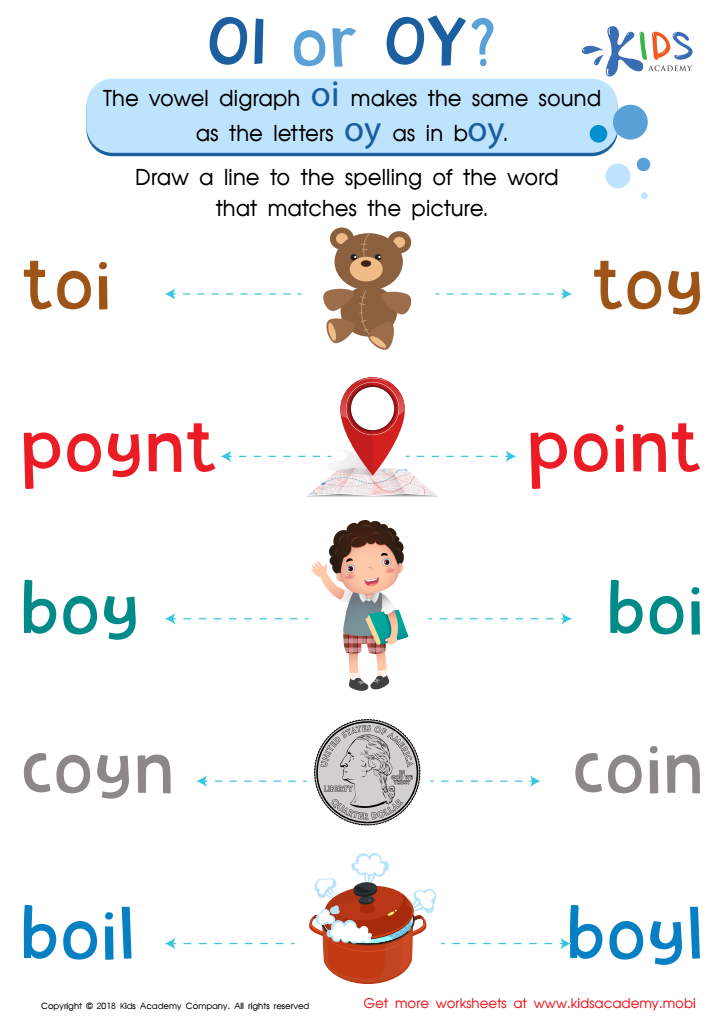

Reading: OI and OY Worksheet


Reading: EA as in Bread Worksheet
Parents and teachers should prioritize vocabulary expansion and vowel blends for children aged 3-8 because these early years are a critical period for language development, which is foundational for literacy and overall cognitive growth. Mastering a rich vocabulary supports reading comprehension, which is vital for academic success across all subjects. Vowel blends (combinations of vowels that produce distinct sounds) are essential building blocks in phonics, helping children decode words efficiently and improving their reading fluency.
Children who develop strong vocabulary and phonics skills early on are more likely to become proficient readers, boosting their confidence and motivation to learn. Understanding vowel blends also allows children to write more expressively and accurately, laying the groundwork for effective communication skills. Furthermore, enhanced vocabulary fosters curiosity and eagerness to explore new topics, encouraging lifelong learning.
Early attention to these skills helps identify and mitigate potential reading difficulties, ensuring that every child has an equal opportunity to succeed. By nurturing these core skills, parents and teachers are investing in the child's future academic achievements, overall cognitive development, and ability to express themselves clearly and creatively.

 Assign to My Students
Assign to My Students











